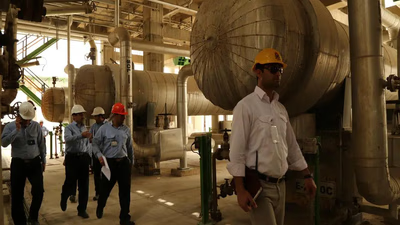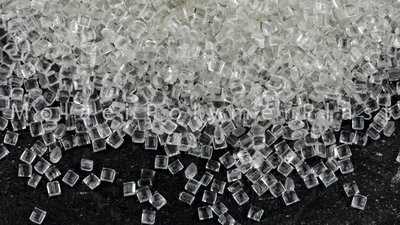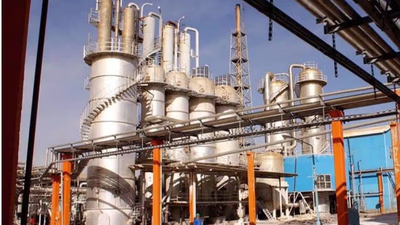
Polybutadiene production in West Asia: key players and insights.
Having comprehensive knowledge of PBR producers in West Asia enables the trader to conduct thorough market analysis. This includes understanding the supply-demand dynamics, production capacities, and competitive landscape of PBR in the region. Such information helps the trader make informed decisions regarding pricing, sourcing, and potential market opportunities. Knowing the key PBR producers in West Asia allows the trader to effectively manage the supply chain. This includes identifying reliable suppliers, assessing their production capabilities, and understanding their geographic proximity. By having complete information, the trader can optimize sourcing strategies, negotiate contracts, and ensure a stable and efficient supply of PBR to meet customer demands.
Knowing the PBR producers in West Asia provides insights into potential market expansion opportunities. By identifying emerging producers or new production capacities, the trader can explore untapped markets, forge strategic partnerships, and capitalize on growing demand for PBR in various industries. This knowledge helps the trader stay ahead of the competition and tap into new business prospects. With the launch of this unit, both the domestic need of the rubber industry for this material will be met and the production surplus will be exported to other countries. The sale of the products of this unit at today's price of butadiene in the world markets has an annual exchange rate of 103 million dollars for the country.
- Sadara is a joint venture between Saudi Aramco and Dow Chemical Company. It operates a large-scale petrochemical complex in Jubail, Saudi Arabia. The complex includes facilities for the production of butadiene, among other chemicals and polymers. Sadara's butadiene unit has a production capacity of approximately 150,000 metric tons per year.
- Petro Rabigh is a joint venture between Saudi Aramco and Sumitomo Chemical. It operates an integrated refining and petrochemical complex in Rabigh, Saudi Arabia. The complex includes a butadiene extraction unit with a capacity of around 130,000 metric tons per year.
- Borouge is a petrochemical company based in Abu Dhabi, UAE. It operates a major petrochemical complex in Ruwais, Abu Dhabi. While Borouge's primary focus is on the production of polyolefins, it also has facilities for the production of butadiene. The exact production capacity of its butadiene unit was not readily available.
- Qatar Petrochemical Company (QAPCO) is a petrochemical company based in Mesaieed, Qatar. It operates a large petrochemical complex that produces a wide range of products, including butadiene. The exact production capacity of QAPCO's butadiene unit was not readily available.
More than 50% of the units and more than 62% of the advanced parts of this complex are made in the country. $ 148 million has been invested in 4 years to build this unit. Most of the butadiene produced by this unit is exported to Japan, China and Taiwan. The butadiene produced by this complex will be used in the production of polybutadiene rubber (PBR), styrene butadiene rubber (SBR) and acrylonitrile butadiene styrene (ABS). The feed of this complex is 245 thousand tons per year of four carbon compounds, which is supplied by Jam Petrochemical.
Detailed information about PBR producers in West Asia helps the trader stay updated on market trends, pricing fluctuations, and production capacities. This knowledge enables better negotiation strategies with suppliers and customers. It allows the trader to assess the impact of factors such as feedstock costs, production volumes, and market competition on PBR pricing, which can be crucial for maintaining profitability. Understanding the PBR producers in West Asia helps the trader assess potential risks and vulnerabilities in the supply chain. This includes evaluating factors such as political stability, regulatory changes, production disruptions, and logistical challenges. By having complete information, the trader can develop risk mitigation strategies, diversify sourcing options, and anticipate potential disruptions that could impact the availability or cost of PBR.
-

The Middle East is a key player in the global polybutadiene (PBR) market, leveraging its abundant petroleum and natural gas resources. The region has developed extensive petrochemical complexes that produce a variety of chemicals and polymers, including PBR. The availability of butadiene, a crucial raw material for PBR production, is ensured by the region"s rich petroleum reserves. This proximity to feedstock sources reduces transportation costs and enhances competitiveness in both regional and global markets. Countries like Saudi Arabia, UAE, and Qatar have established polymerization plants that contribute significantly to the production capacity of PBR. Investments in research and development are ongoing to improve product quality and meet industry demands. Polybutadiene is favored for its water resistance, abrasion resistance, and flexibility at low temperatures, making it suitable for various applications such as tires and seals. However, it has limitations including low heat resistance and unfavorable processability.
The Middle East also focuses on expanding its downstream industries to add value to its petrochemical offerings by processing PBR into finished rubber products. With strategic access to major shipping routes, the region efficiently exports PBR to markets in Asia, Europe, and Africa while also catering to domestic demand driven by growing automotive and construction sectors. "
-

Comprehensive knowledge of polybutadiene rubber (PBR) producers in West Asia is essential for traders to conduct effective market analysis. Understanding supply-demand dynamics, production capacities, and the competitive landscape allows traders to make informed decisions regarding pricing and sourcing. Key producers such as Sadara, Petro Rabigh, Borouge, and Qatar Petrochemical Company play significant roles in the region"s PBR market. With Sadara"s capacity at 150,000 metric tons per year and Petro Rabigh at 130,000 metric tons, these companies are crucial for meeting both domestic needs and export demands. The insights gained from knowing these producers enable traders to optimize their supply chains by identifying reliable suppliers and assessing production capabilities. Additionally, this knowledge opens up opportunities for market expansion by identifying emerging producers and new capacities. The recent establishment of a large butadiene unit is expected to generate significant revenue through exports to countries like Japan and China. Traders can leverage detailed information about PBR producers to stay updated on market trends, negotiate better contracts, and develop risk mitigation strategies against potential supply chain disruptions.
-

Polybutadiene rubber (PBR) is a synthetic polymer formed from butadiene monomers, characterized by its light yellow color and solid state. Its properties vary based on the configuration of double bonds during polymerization, influencing its applications in various industries. Safety considerations are crucial when handling PBR, as it can pose health risks if not managed properly. The material is stable under normal conditions but can catch fire at high temperatures (332 °C) and should be stored away from oxidizing agents. It is insoluble in water but soluble in organic solvents like hexane and toluene. Proper personal protective equipment (PPE) is recommended to prevent skin irritation and respiratory issues from inhaling rubber dust or fumes. Storage guidelines dictate that PBR should be kept in a cool, dry place, ideally below 30 °C, and away from heat sources. Packages must be transported according to shipping standards, ensuring they are placed on wooden pallets and stored in polyethylene containers. Disposal of PBR waste must comply with local regulations to prevent environmental contamination.
-

Polybutadiene rubber (PBR) is known for its high elasticity, resilience, and excellent abrasion resistance, making it ideal for various applications. It is extensively used in tire manufacturing, where it enhances performance by improving rolling resistance and traction. PBR"s durability and flexibility also make it suitable for conveyor belts, seals, gaskets, and vibration dampers in automotive and industrial settings. Its chemical resistance allows it to withstand exposure to oils and fluids, which is crucial for automotive components. Additionally, PBR is utilized in sporting goods like golf balls and tennis balls due to its resilience. The material"s low glass transition temperature ensures flexibility even in cold environments. PBR can be blended with other rubbers to tailor its properties for specific applications, enhancing its versatility across industries.
-

Polybutadiene rubber (PBR) is a synthetic elastomer derived from the polymerization of butadiene, a petroleum-based monomer. It is known for its high resilience, excellent abrasion resistance, and low glass transition temperature, making it suitable for various applications. PBR is predominantly used in the tire industry, accounting for over 70% of its consumption, where it enhances traction and durability. There are two main types of PBR: high cis and high trans, each offering different properties such as elasticity and stiffness. The material can be modified with additives to improve characteristics like oil resistance and heat stability. In addition to tires, PBR is utilized in industrial products such as conveyor belts, hoses, seals, and adhesives. Its versatility allows manufacturers to tailor its properties for specific applications by adjusting molecular structure or incorporating fillers like carbon black. The production process involves polymerization using catalysts and can be executed through various methods including solution or emulsion polymerization.
Overall, polybutadiene rubber"s unique properties contribute significantly to its widespread use across multiple industries. "





